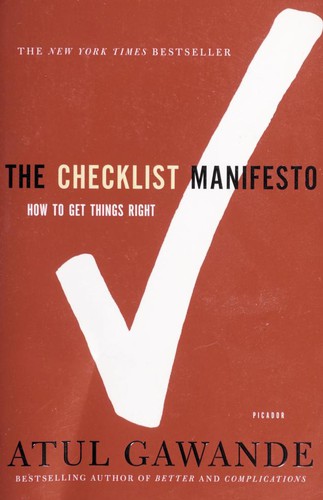
The Checklist Manifesto
Atul Gawande
A world-renowned surgeon makes the case for using a checklist.
Date Read: 2023-02-20
Recommendation: 4/5
Notes:
Two types of errors
- Ignorance - we have only a partial understanding of how the world works.
- Ineptitude - knowledge exists, yet we fail to apply it correctly.
In medicine, the volume and complexity of what we know has exceeded our ability to deliver its benefits correctly, safely, or reliably.
Checklists remind us of the minimum necessary steps and make them explicit.
Checklist rules
Define a clear pause point at which the checklist should be used.
Decide if it’s a DO-CONFIRM or READ-DO
DO-CONFIRM: Perform tasks from memory then pause and confirm if everything has been correctly done.
READ-DO: Carry out tasks as you check them off.
Keep the checklist brief. 5 - 9 items is the limit of working memory.
Focus on “killer items” - most dangerous to skip but nonetheless overlooked.
Simple and exact language.
Checklists are not how-to guides.
Atul gambled that the hospital’s staff would be far more likely to adopt the checklist if they saw their leadership using it.
An investor used a checklist to review key decisions when making an investment - reading footnotes in cashflow statement, reviewing management risks, reconciling cash flow and reported revenue growth etc.
When we look closely, we recognize that the same balls are being dropped over and over, even by those of great ability and determination. We know the patterns. We see the costs. It’s time to try something else. Try a checklist.